‘We now have a thousand more residents than we did before the full-scale invasion...’ Interview with the Trostianets community leader
Yurii Bova, Head of the Trostianets community in the Sumy region, on people’s desire to stay at home despite the danger, and how this should be taken into account in future government policy.
By Dmytro Syniak
Trostianets was occupied for only a month, but that was long enough for the city to be reduced to rubble. The Armed Forces of Ukraine and the Trostianets Volunteer Territorial Community Unit fought the occupiers tirelessly throughout this period. Local residents actively assisted them by passing on information about enemy movements, which Ukrainian artillery then targeted accurately. On 11 March 2022, a command vehicle was destroyed by a targeted strike from a Bayraktar unmanned combat aerial vehicle near the Russian headquarters, which were located in the building belonging to the Trostianets City Council. The vehicle was carrying senior officers from the Russian 1st Guards Tank Army who were planning an offensive on Lebedyn, Okhtyrka, and Sumy. There were many similar attacks, and ultimately, the enemy was forced to retreat – the first time this had happened since the full-scale invasion began.
On 25 March 2022, Ukrainian troops entered Trostianets. They witnessed a sad sight. Russian tanks had destroyed almost all the roads and damaged nearly all the main power lines, leaving everyone without electricity, communications, or an internet connection. Mountains of rubbish and ammunition boxes were scattered haphazardly everywhere, left behind during the retreat. The city’s hospital, railway station, and bus station were in ruins.
The invaders looted the warehouses and offices of the Ukrainian chocolate factory, destroyed its administrative building and demolished part of its production facilities. They also damaged the city’s two main architectural landmarks: the ‘Kruhlyi Dvir’ (Round Courtyard) and Leopold Kenig’s palace. The Russians looted all the city’s shops and destroyed, burned or took away the public transport. They killed over 50 civilians (11 people are still missing, making it difficult to give an accurate death toll) and damaged or destroyed over 1,200 buildings, including residential, office, administrative, and industrial facilities. Following a preliminary assessment, it was determined that the Russian invaders had caused over USD 120 million worth of damage to the Trostianets community.
It was from this point that the team, led by Yurii Bova, began to rebuild the city. The subject of our conversation with Mr Bova is precisely this reconstruction, as well as the future of the community.
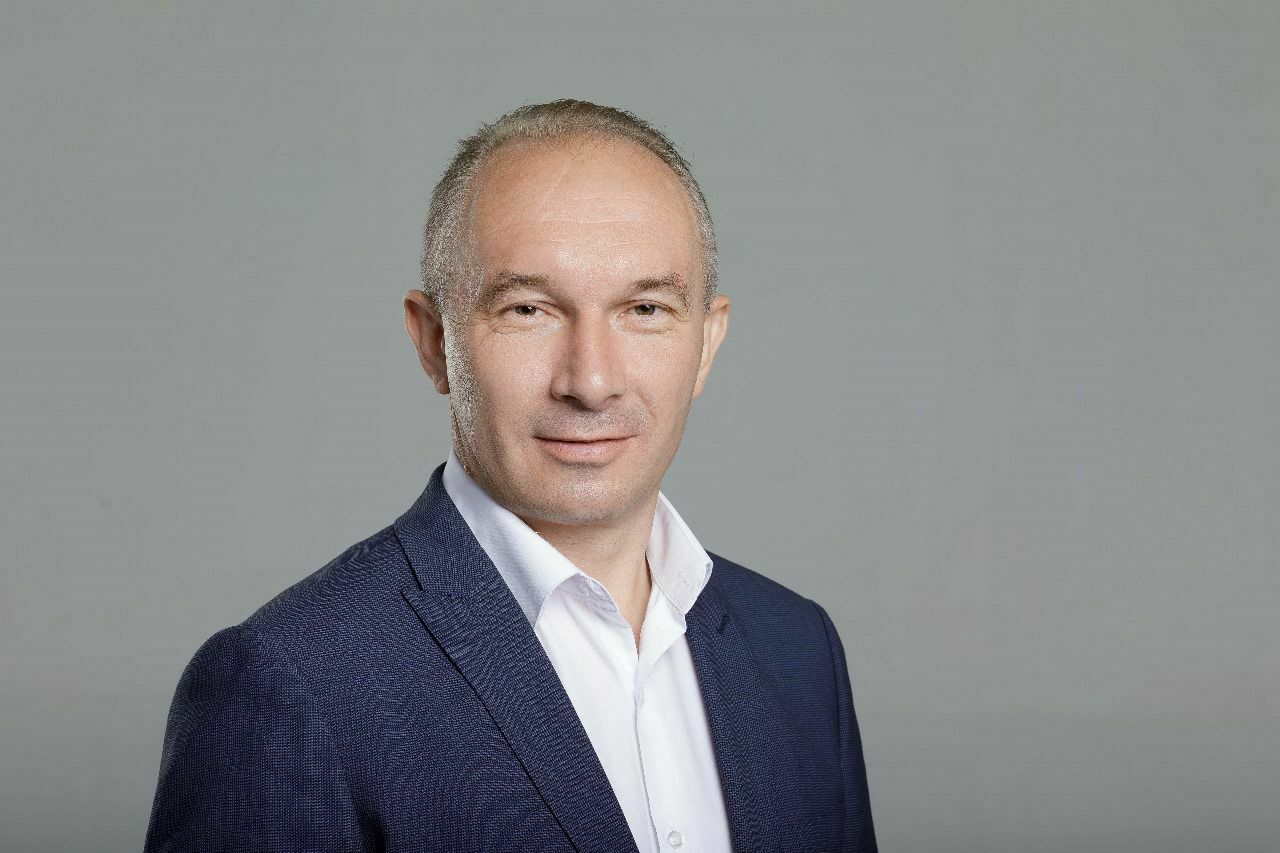
Yurii Bova, Head of the Trostianets Community in the Sumy region
Faith in the community
Following reports of the horrific looting of Trostianets in spring 2022, the press occasionally covered the city’s successful restoration. Has Trostianets been completely restored?
Russian tanks left such terrible destruction in their path that it initially seemed impossible for Trostianets to return to its pre-invasion level of prosperity. On the evening of 25 March 2022, 362 pieces of Russian military equipment left the city – just think about that number! At the same time, 142 units remained in Trostianets forever. In other words, a whole fleet tortured and robbed the locals for a month! As they fled, the Russians took everything they could lay their hands on: all the equipment, all the computers, all the video cameras – they left nothing behind! Instead, the Muscovites left mines everywhere: not only at the entrances to buildings, but also in their attics and basements. At that time, Trostianets was on the verge of a humanitarian catastrophe… The military, along with our international partners and friends from across Ukraine, provided us with invaluable support at that time, with some donating cars and computers and others sending humanitarian aid. Volunteers eventually covered the broken windows with plastic sheeting, and people gradually began to return.
Has the population of the Trostianets community decreased?
Before the full-scale Russian invasion, our community had a population of around 27,000 people. By the end of 2023, 95 per cent of our residents had returned. The situation is similar now: around 5–6 per cent of people are still missing, but that does not mean they will never return. They may still come back. In the meantime, we have accepted around 2,500 displaced persons, which has increased our population by around 1,000. Recognising that people are a community’s most valuable asset, we have worked hard from the very beginning to create ideal living conditions for displaced persons. We repaired their homes and provided them with bedding and other household items. In short, we did everything we could to make these people feel at home. Eventually, word spread – someone called their relatives and friends, told them about our conditions, and more people came. That is why we have achieved this result.
Has business returned? It is very sensitive to any danger...
Entrepreneurs also believed in our community from the very beginning, working enthusiastically to rebuild what had been destroyed or damaged by the enemy. As a result, virtually all small businesses have been fully restored. No enterprise moved elsewhere. Large companies such as our chocolate factory, which suffered USD 20 million worth of damage, have also recovered. Despite its own losses, the factory donated funds to rebuild the hospital and purchased equipment for it. This chocolate factory and the Jacobs coffee factory are now among the 250 largest taxpayers in Ukraine. This is a real victory!
How do community schools operate in the face of constant threats from the east? Have they lost any children?
Of course they have. Around 10 per cent of our children are currently living abroad. In other words, more children than adults have left proportionally. Schoolchildren are studying offline, except for those at two small schools in remote villages in our community. We now need to build bomb shelters at these two schools and are in talks with several international foundations about this. We do not plan to close these schools due to the virtual absence of roads. How could we possibly transport children to other schools under such conditions? The security factor also cannot be ignored.

|
Russian troops on the streets of Trostianets, 9 March 2022 |
The remains of the Trostianets bus station |

Pryvokzalna square in Trostianets, March 2022
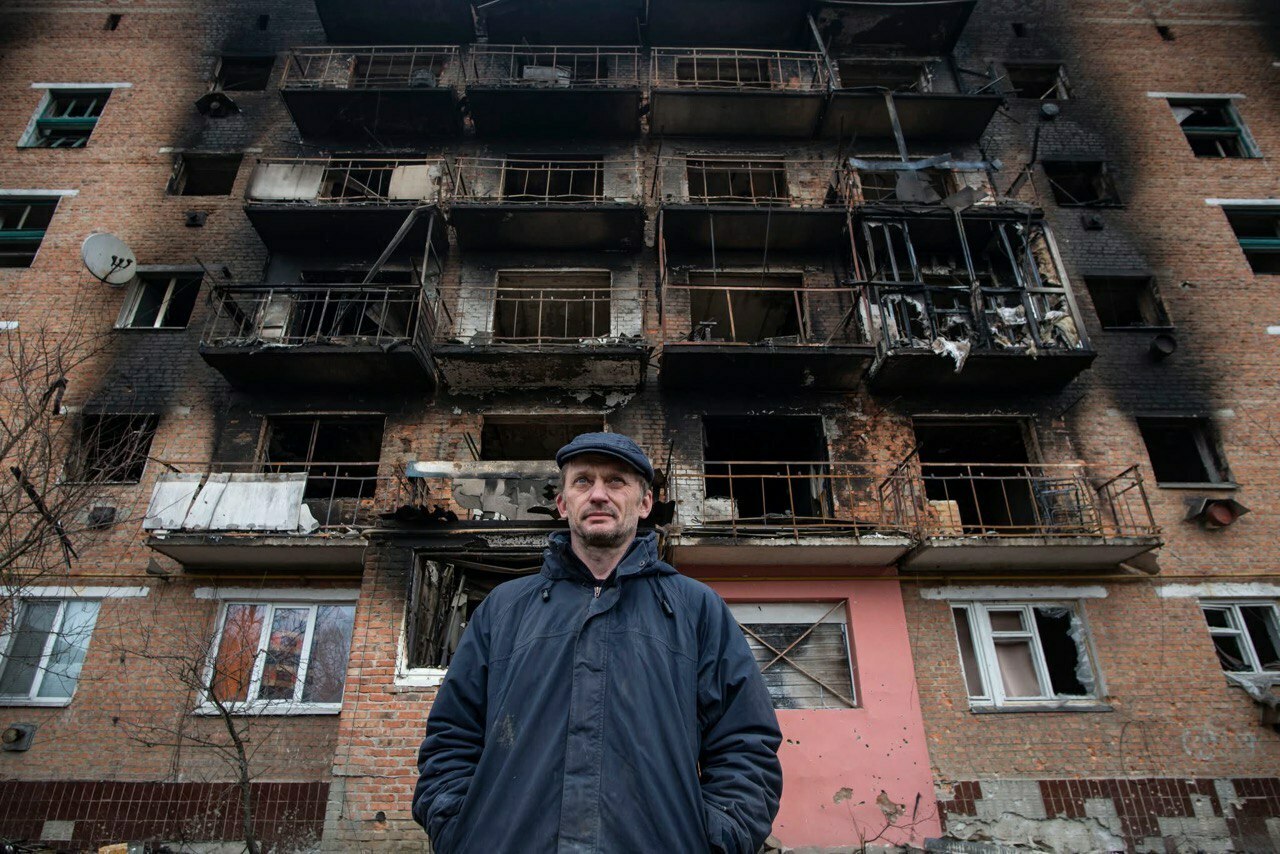
A burned house at 53, Blahovishchenska street
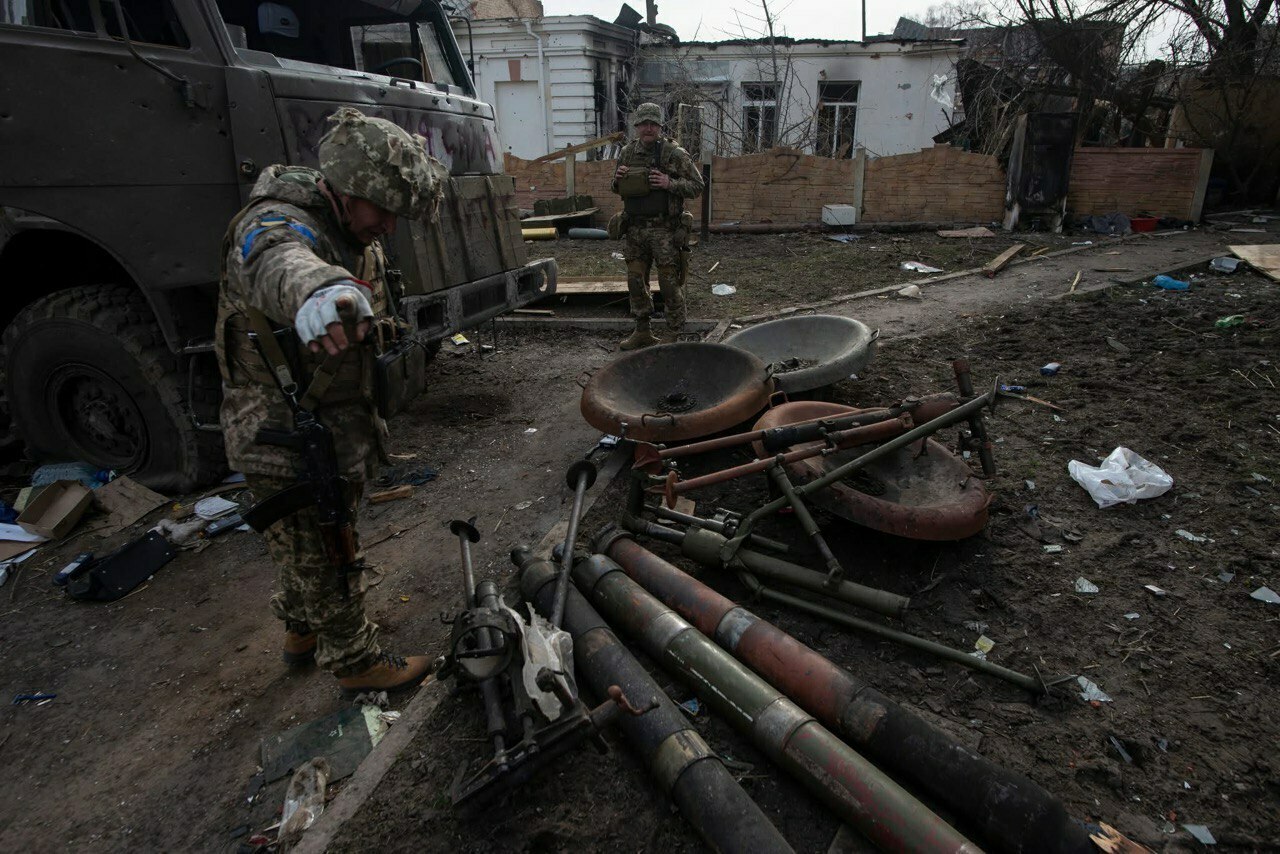
The remains of Russian mortars on Pryvokzalna square in Trostianets
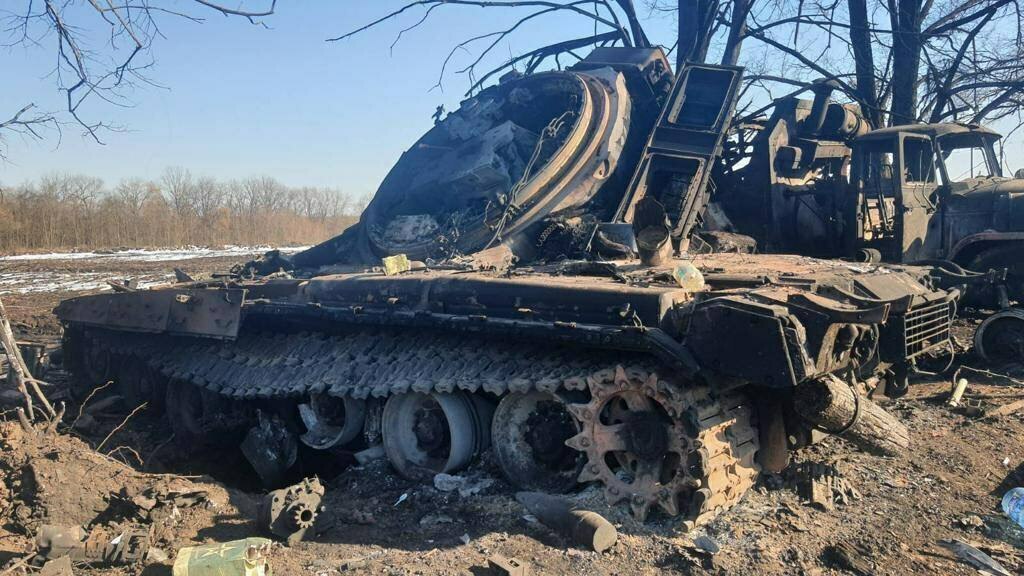
Destroyed Russian vehicles in Bilka village of the Trostianets community
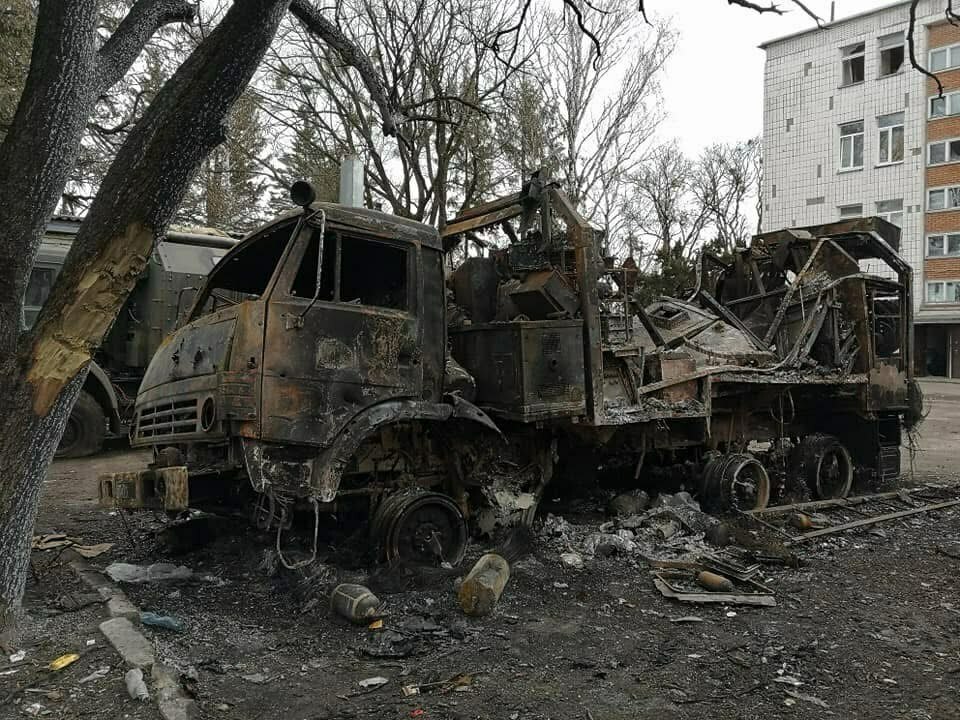
Destroyed vehicles belonging to the command post of Russian 1st Guards Tank Army near the Trostianets City Council building
How the Trostianets hospital, which had been shelled by the Russians, improved from what it was before
Are there any facilities in the Trostianets community that still need to be restored?
Yes, because three and a half years was clearly not enough time to fix everything. I think we have completed around 80 per cent of the work, and I am frankly proud of that. For example, our hospital is now much better than it was before the war. Almost none of its staff have left, by the way. In January 2022, there were 412 medical workers there; now, there are 402.
What I remember most from our conversation at the end of March 2022 is your story about a Russian tank firing at hospital buildings point-blank just for fun...
Now I know many more horrific details about that event. On 18 March, the invaders came to the hospital and forced the remaining staff, who numbered about 15–20 at the time, to line up. The Russian commander then reached out his hand to Volodymyr Perebyinis, the head of the surgical department, and asked, ‘So, are we going to cooperate?’ However, Perebyinis demonstratively hid his hand behind his back. The commander turned around and walked away. Shortly afterwards, a Russian tank opened fire on the building where the doctors had just gathered. However, none of the medical staff were frightened and cooperated with the Russians. The hospital continued to operate as usual. During the month of occupation, nine babies were born there, several of them in the basement where a makeshift delivery room had been set up… However, the worst happened on 22 March. The day before, Ukrainian troops had attempted to enter the city but had later retreated after killing many Russians and burning a lot of their vehicles – right next to the hospital. The next day, two Russian tanks shelled the hospital, a polyclinic, a forest research station, and nearby residential buildings. Once the tanks had run out of ammunition, the hospital came under mortar fire and was then attacked by ordinary soldiers who shot all the windows with automatic weapons. In total, there were 480 windows…
How much time and money did the hospital renovation project take?
We are still working on it, so the estimate has not been finalised yet. However, I can confirm that over UAH 100 million has already been spent on this project. At the same time, we have modernised the entire renovated facility. For instance, we fully insulated all hospital buildings and installed solar panels on the roof. Funding for this came from international partners, the Ministry for Development, and the Agency for Restoration. Our hospital is now a modern medical facility that can be regarded as exemplary. I believe all Ukrainian hospitals that have been damaged or destroyed should be restored to the same standard. The most important thing is saving human lives, and we will rebuild everything else – this is the message that Trostianets is now sending to the whole of Ukraine.
How does the Trostianets community help the army?
We actively cooperate with the 93rd Mechanised Brigade ‘Kholodnyi Yar’ and with the military units in which our community’s residents serve. We purchase teleoperated compact quadcopter drones ‘Mavic’ for them, as well as generators, various types of vehicle and ammunition. Since 2022, we have also supported the Trostianets 1 volunteer unit, which carries out various tasks for the military command in our community. We provide the unit with everything except weapons and ammunition, including salaries, clothing, fuel, and counter-shahed measures. Each year, we spend between UAH 5 and 10 million on this, depending on the size of the unit and the nature of its tasks.
 The inpatient ward of the Trostianets hospital, shelled by Russian tanks on 22 March 2022
The inpatient ward of the Trostianets hospital, shelled by Russian tanks on 22 March 2022
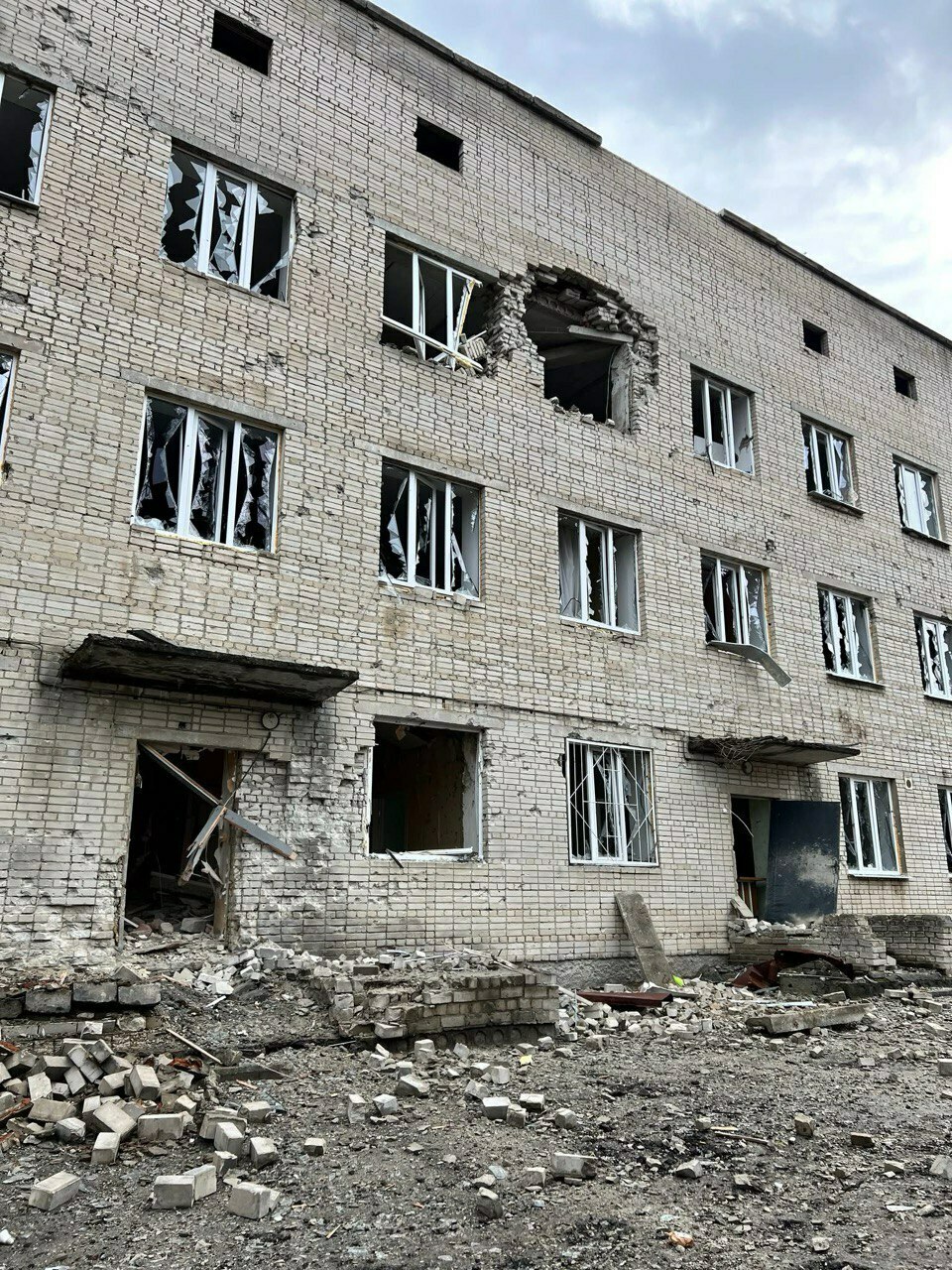 The polyclinic of the Trostianets hospital, destroyed by Russian tanks on 22 March 2022
The polyclinic of the Trostianets hospital, destroyed by Russian tanks on 22 March 2022

One of the two Russian tanks that fired on the hospital…

… and its dreadful fate

The Trostianets hospital today
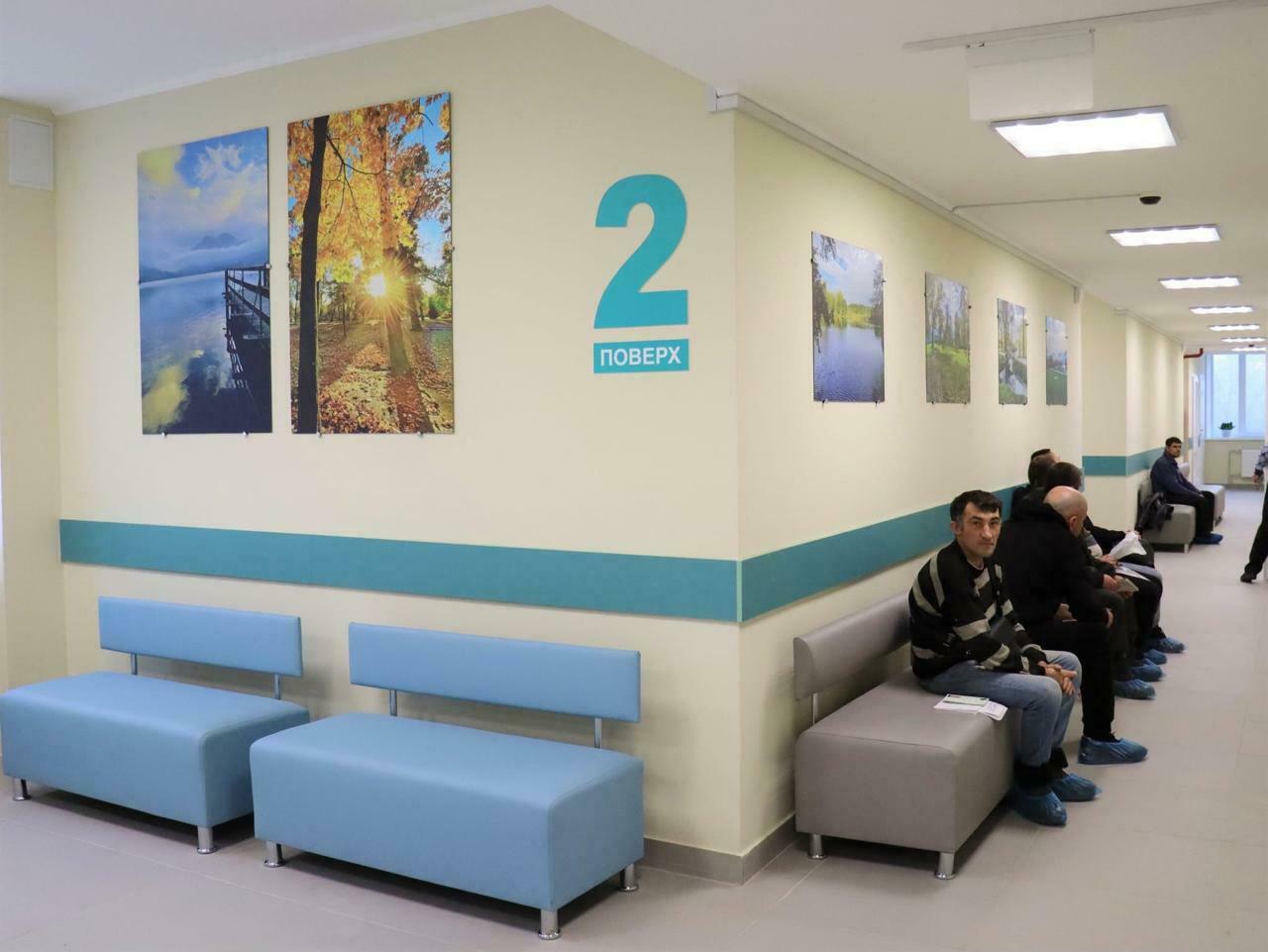
The lobby of the Trostianets hospital after restoration

The restored polyclinic in Trostianets
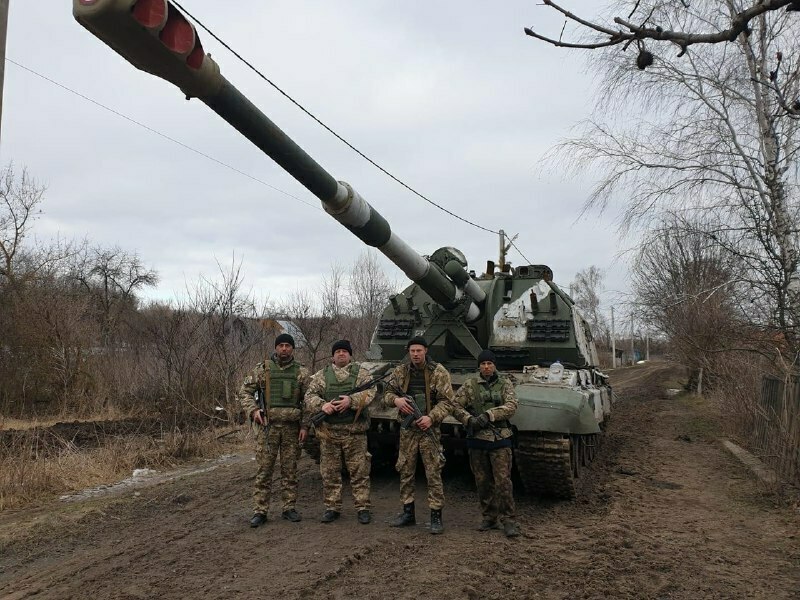
The first Trostianets Territorial Defence fighters in March 2022

Fighters of the Trostianets 1 volunteer unit in March 2022
How Trostianets received half a billion hryvnias from the state for reconstruction and managed to attract the same amount by itself
Your community was selected for a unique restoration project, for which funds were allocated directly from the state budget. How did you manage to make this happen?
In spring 2022, Trostianets was the worst affected area in the entire Sumy region. Perhaps it helped that we began the recovery process by creating project plans and presenting the Government with ready-to-go recovery projects. This required considerable effort and funding, but time has shown that our approach was effective. Two residential buildings, a hospital, a railway station, the square in front of it and a bus station have now been restored at the Government’s expense, as have commercial facilities. In addition, 3 km of the Sumy–Poltava highway running through the city has been completely renovated, including the drainage systems and bus stops. I estimate that the total cost comes to around UAH 0.5 billion.
In fact, this Government programme is fully in line with the main idea of the ‘Shoulder-to-Shoulder: Cohesive Communities’ project, which aims to transform communities on the Russian border into a network of strongholds supported by the whole of Ukraine. What is your opinion of the project? Is the Trostianets community taking part?
When we returned to the city, our utility companies had been stripped of all their buses, computers, and even angle grinders – everything had been looted. Therefore, yes, border communities really need help. It would be impossible to restore everything at our own expense, even in ten years. This is why the ‘Shoulder-to-Shoulder’ project is so important. It is not just about money, either. For instance, we could take children from the border area on holiday or send local veterans for rehabilitation. Our cultural workers in Trostianets currently have nothing to do, as they cannot organise concerts or festivals. After all, this is their livelihood! So, under the ‘Shoulder-to-Shoulder’ project, they now travel to our partner communities in Kitsman and Chortkiv, where they perform at various events. Another partner of ours, the Kivertsi community in the Volyn region, shared water supply equipment and transformers with us. We receive a lot of assistance from outside the ‘Shoulder-to-Shoulder’ project, as we have always worked actively with our foreign partners, and we are now expanding this number. Our reach is already very broad: France, Germany, Italy, Sweden, and Japan…
How much assistance have you managed to attract?
As I said, we received around UAH 0.5 billion from the state. We attracted a similar amount from various partners during the full-scale invasion. When I mention this figure, I am referring not only to financial assistance, but also to humanitarian, technical, and technological support. Our department for international cooperation and project activities is seeking such assistance. We take our infrastructure and how our businesses operate very seriously. No one will live in neglected cities where there are no jobs or opportunities for development, let alone displaced persons. And people are a community’s most valuable asset.

Renovation of the Trostianets bus station and the square in front of it
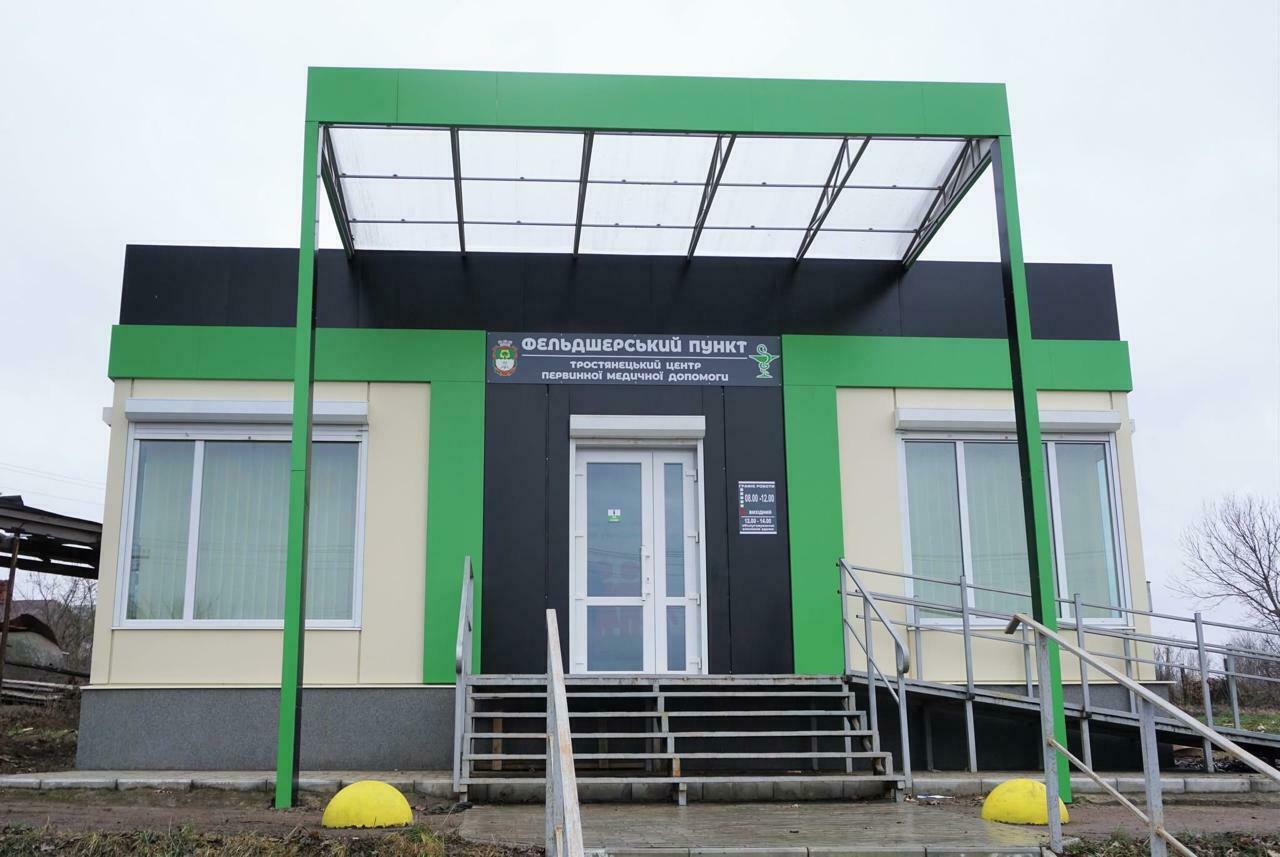
Renovated primary health care centre in Stanova village of the Trostianets community. It was completely destroyed by the occupiers
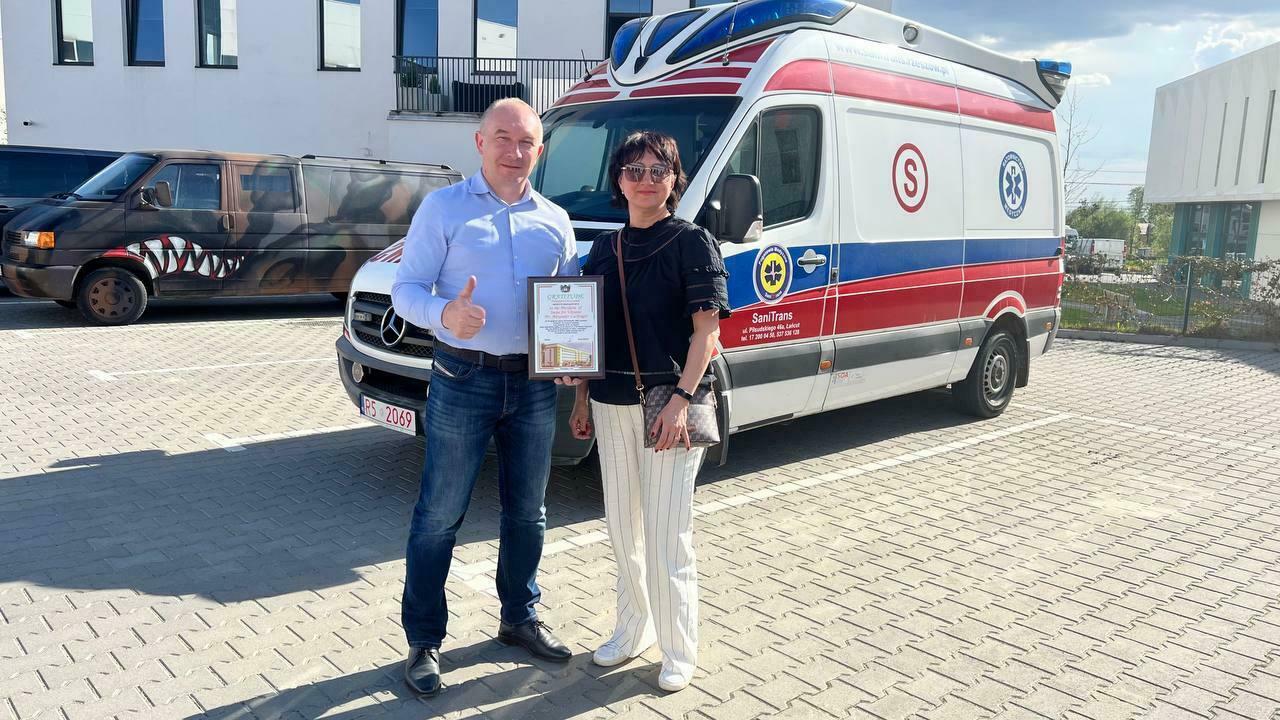
Yurii Bova, Head of the Trostianets community, and Liliia Hontar, Director General of the restored hospital, solemnly accept an ambulance from the city council’s partner, the Swiss charitable foundation Swiss for Ukraine
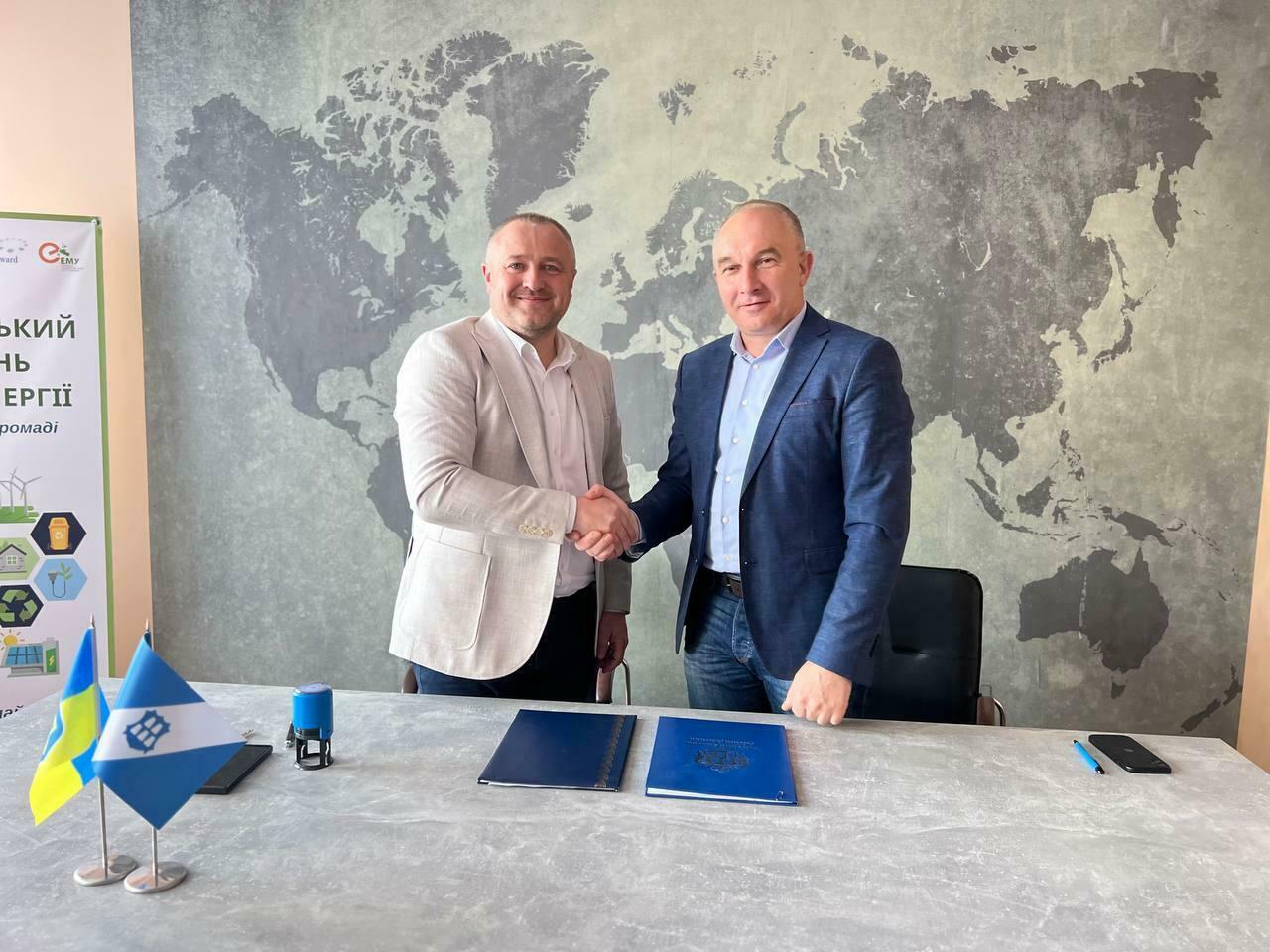
Yurii Bova (right) and Ivan Dyriv, Head of the Dolyna community in the Ivano-Frankivsk region, signing a Memorandum of Cooperation within the ‘Shoulder-to-Shoulder: Cohesive Communities’ project in Lviv
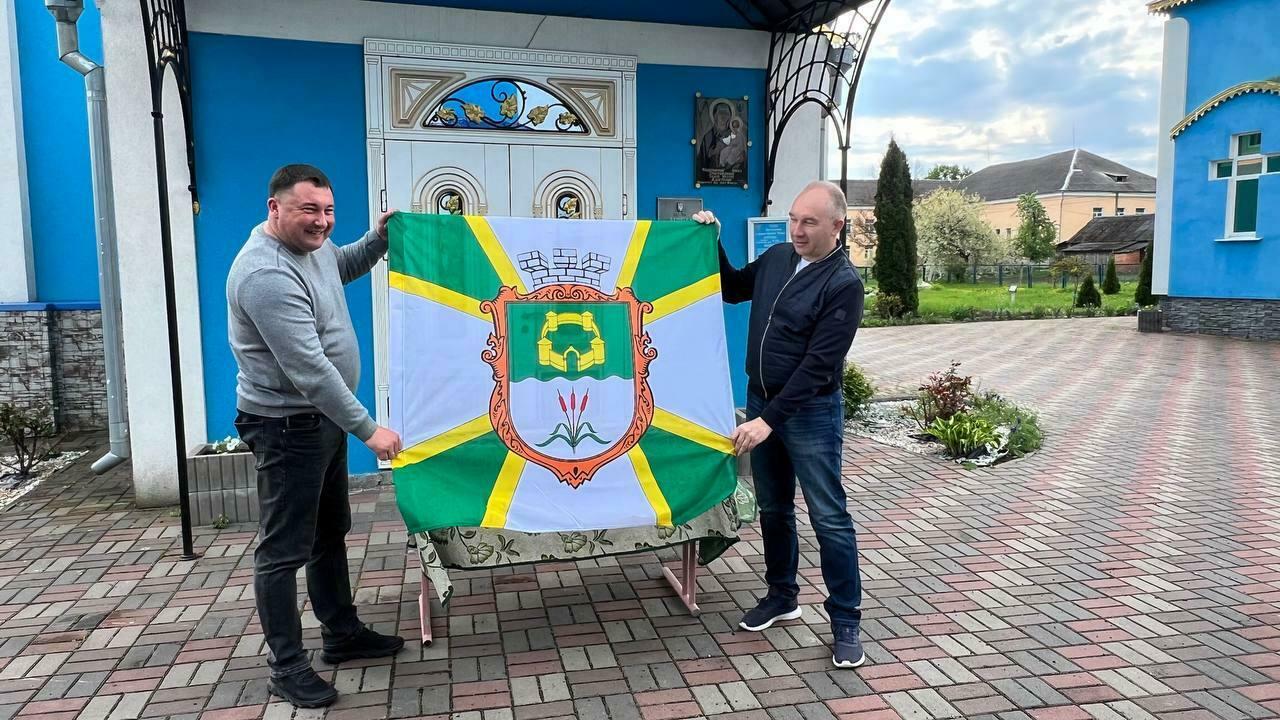
Yurii Bova (right) and Oleksandr Kovalchuk, Mayor of Kivertsi, with the coat of arms of Trostianets – after signing a Memorandum of Understanding within the ‘Shoulder-to-Shoulder: Cohesive Communities’ project
On the construction of social housing, mistakes in state policy, and people who want to stay on the border
Participating in the social housing construction programme could significantly increase the number of residents from other communities moving to your community. Are you familiar with the programme?
Yes, but unfortunately, we cannot allocate 10–20 per cent towards co-financing the construction, as this would equate to UAH 30–40 million. We simply do not have that kind of money. Therefore, I believe the Government and the European Investment Bank, which is allocating the funds for construction, are wrong. Construction should take place where the state needs it, not where the community is ready to participate in co-financing. We also need to consider which sites are better prepared for construction, where communication costs will be lower, and where adequate infrastructure, such as schools, kindergartens and hospitals, is in place. In short, it should be in places where it will be convenient for people to live.
But under the current policy, more houses can be built. Transport and businesses will eventually follow wherever people live, and the necessary infrastructure will be developed. Do you have a different view?
I agree, but under these conditions, most of the construction money will go to wealthy communities in western Ukraine, which can easily contribute UAH 30–40 million. At the same time, the fact that the houses will be built on some remote site, costing twice as much as if they were built here, will not matter. It is no secret that the budgets of large cities in western Ukraine have almost doubled since the full-scale invasion began. After all, there are fewer threats there and air raid sirens are less frequent, so investments are much more likely to go there. I am not revealing any secrets when I say that Lviv experienced an economic boom during the full-scale invasion. While I am happy for them, I would like to ask: is it the state’s policy to develop Lviv and other large cities in western Ukraine while allowing the eastern borderlands to decline? I doubt it. This means that the existing mechanism for allocating funds needs adjusting.
How exactly should it be adjusted? What is your view on the Government’s policy on social housing construction?
For example, in Trostianets there is a wonderful plot of land on which a small neighbourhood for around 12,000 people could be built. There is a water intake and sewage treatment facilities nearby, as well as a hospital, a school, a kindergarten, and a factory where people can work. Several bus routes already pass near the plot. It is the perfect location! Furthermore, with the help of Metinvest’s designers, we have developed a concept for this microdistrict. Metinvest originally intended to build it in the restored cities of Bakhmut or Mariupol, but ultimately offered us the idea. The neighbourhood has even been named ‘Steel Dream’. Yet this virtually complete project is gathering dust on the shelf while houses are being built for our people in western Ukraine. Is this sensible state policy?
This creates a somewhat strange picture. The Trostianets community has not lost its businesses or population. However, it does not have the funds to co-finance housing projects that would attract the most valuable asset to the city – people, in your own words. How would you explain this contradiction?
In reality, the situation is not as positive as you might think. Here is a simple example: Before the full-scale war of aggression, our chocolate factory produced goods worth almost UAH 9 billion per year. It employed over 1,000 people and had an annual production volume of 7,000–8,000 tonnes. Now, however, it is only 4,000 tonnes, which has led to a sharp reduction in the number of employees. As you can imagine, this has resulted in a significant decrease in tax revenue. It has only recently that we have reached pre-war budget figures, and we have even slightly exceeded them. The total community budget (including transfers) is UAH 325 million, UAH 276 million of which is own revenue. This year’s development budget is just UAH 26 million, which is used to finance infrastructure restoration, project activities and renovation of various utility systems. Not to mention inflation and the crazy rise in prices over the last 3.5 years. Another point: we are very grateful to our partners for providing us with utility vehicles. But let’s be honest: these vehicles are far from new and often only work thanks to the incredible efforts of our people, who do everything they can to keep them running for their, let’s again be honest, not very high salaries.
What is the maximum amount that can be allocated by the city council to co-financing housing projects?
I think we could easily find UAH 1–2 million, but definitely not UAH 30–40 million as demanded by the Government. I firmly believe that communities on the Russian border, which have suffered the most from the war, should receive greater state support for reconstruction and development. Otherwise, it will be difficult to encourage people to return and ensure they stay.
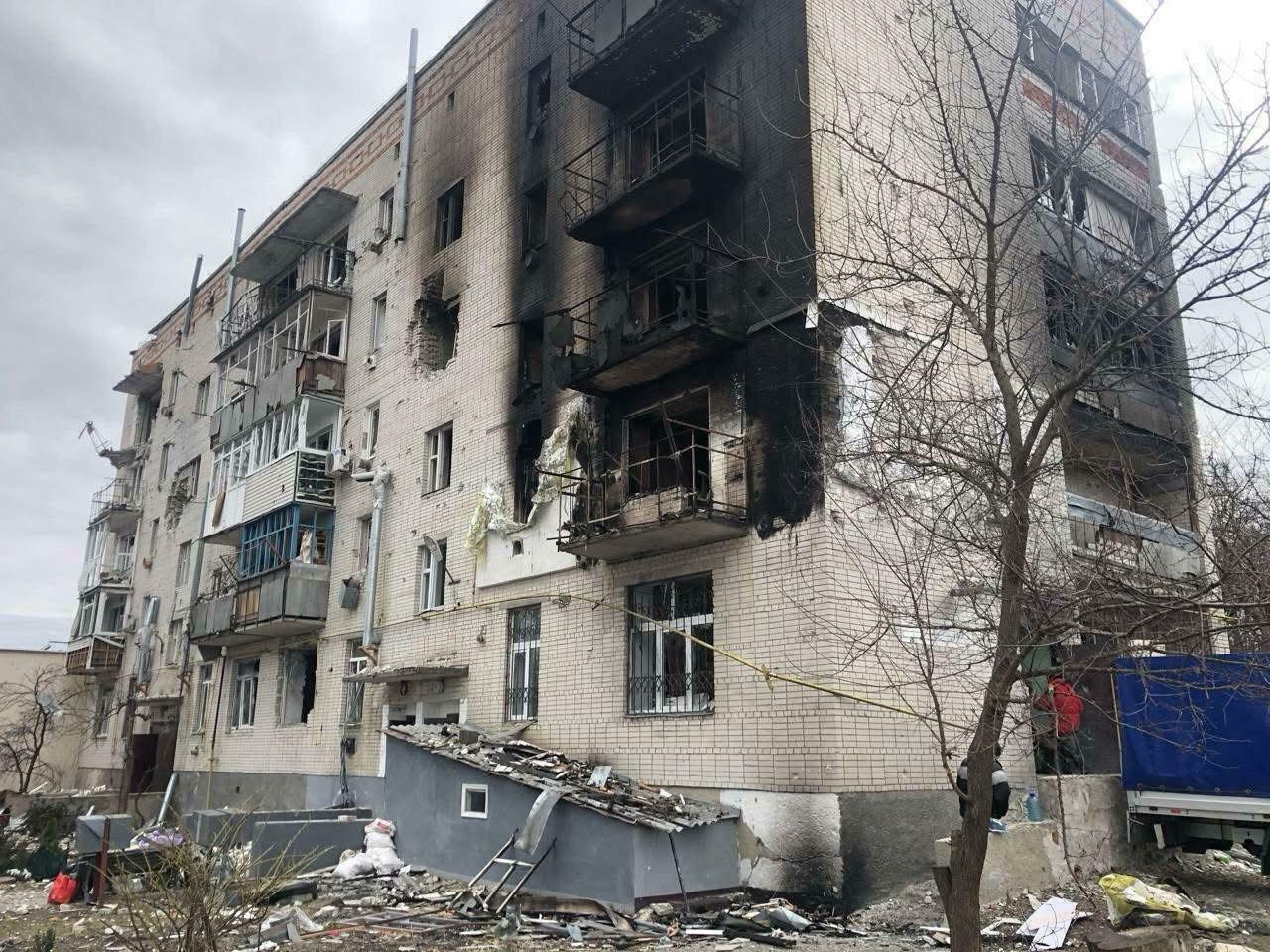
A house on 9, Neskuchanska street in Trostianets, destroyed as a result of Russian shelling…
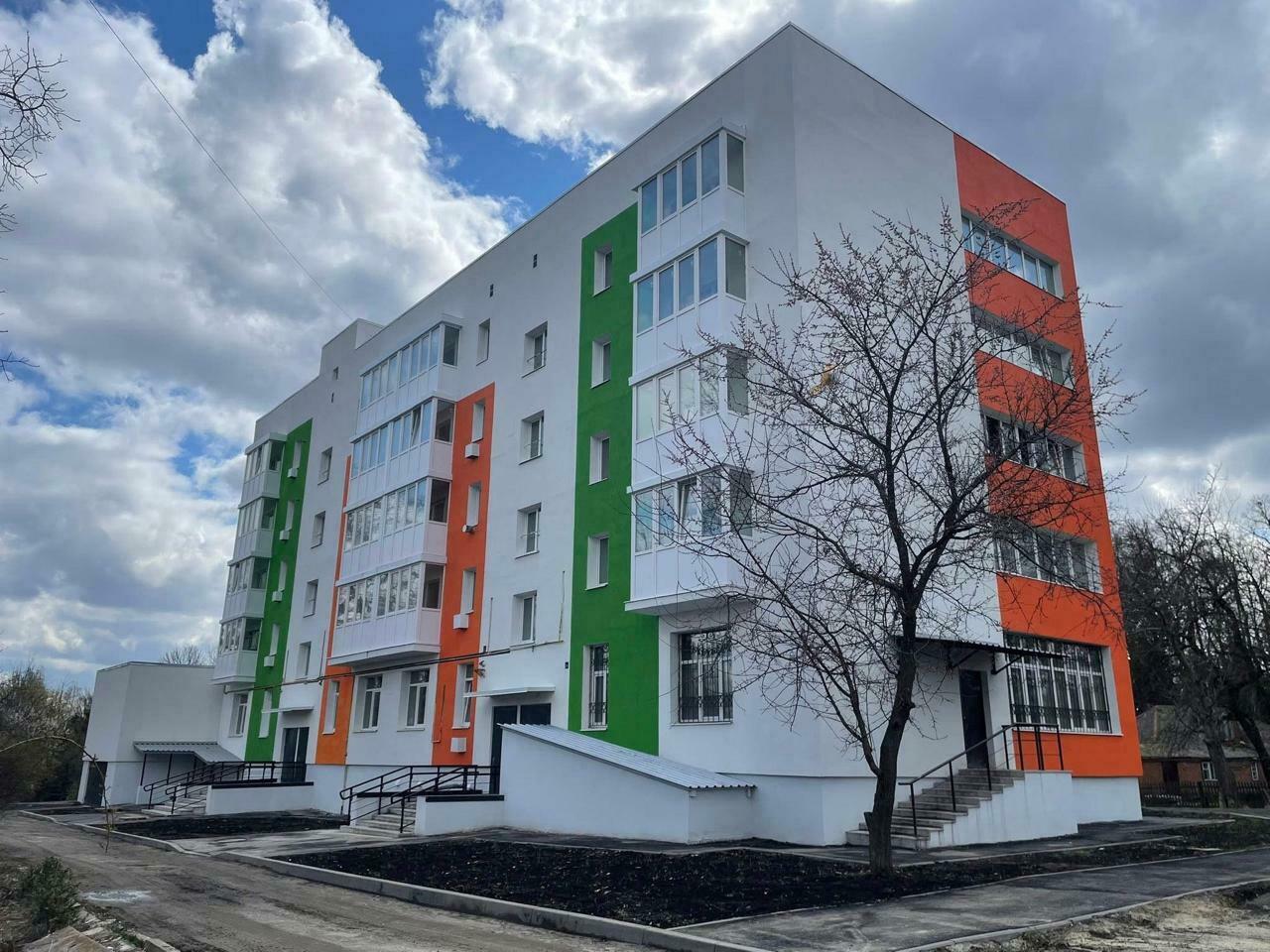
… and restored at the expense of the Ukrainian Government

The premises of the former sports base in Neskuchne village, now home for displaced persons

Public transport of the Trostianets City Council, provided by its partners, against the backdrop of the city’s architectural landmark – the 18th-century manor house and riding arena ‘Kruhlyi Dvir’ (Round Courtyard)
Foreign investors have repeatedly promised, ‘As soon as the war is over, we will come to you the very next day!’
Given the constant threat from Russia, attracting investment is probably unrealistic. How will the community develop then?
Of course, we are not giving up on attracting investment! However, we must be realistic and accept that it is unlikely that a new plant or factory will be built here in the near future. After all, we are only 45 km from the Russian border. Nevertheless, our small businesses are developing slowly but surely. Trade is picking up and new supermarkets have opened, partly thanks to the military guarding the border! We are simply lagging behind others because Okhtyrka had three military units even before the full-scale invasion, whereas we had none.
You had several plots of land earmarked for technology parks, didn’t you? How are they being used now?
We hope to attract investors there as soon as the security situation allows. However, we will again need the state’s help with this. The legislative requirement to attract investment to technology parks within three years of registration remains relevant. If this does not happen, the Ministry of Economy will revoke the technology park’s status, and it will have to be re-registered. We would therefore like to ask the state to remove this provision. Which investor would go to a border city now, no matter how attractive the conditions might be? We offer, for example, 40 hectares of land for USD 300 per year, which is 0.01 per cent of the normative monetary valuation. We are also prepared to keep this price unchanged for the next ten years. Nevertheless, I do not expect any investors to respond in the near future.
What if they stopped shooting?
Once this happens, it will not only benefit us, but the whole of Ukraine will experience an economic boom. Huge amounts of money will flow into the country, creating millions of new jobs and encouraging millions of Ukrainians to return home. However, the question of whether the money will go to the Russian border region remains. In any case, we can safely say that the reconstruction of Ukraine will not begin in the west, which was almost untouched by the war, but in the east. Cities and villages will be rebuilt here, attracting hundreds of companies and thousands of workers. As a result, factories and plants producing building materials will be established here. Not to mention the construction of defence lines and various military infrastructure. Moreover, given the need for communities to be technologically autonomous to some degree, alternative energy sources will develop rapidly. That is my prediction.
You are mainly talking about state funds or funds from international organisations. But will business investments come to the border with Russia?
I have had many discussions with foreign investors, some of whom have said, ‘As soon as the war is over, we will come to you the very next day!’ Recently, we spoke with Italian entrepreneurs. They could not believe me when I told them how much it costs to rent land, water and electricity, or what the average salary is here. They were stunned by these figures. There is enormous interest in us from foreign investors, who are currently only deterred by security concerns.
You have not mentioned the fertile lands of the Sumy region at all. It seems that they will not be left idle under any circumstances. What is your opinion on this?
Before the full-scale war broke out, German farmers used to visit us. They were very interested in accessing our market. However, the war prevented them from doing so. In the meantime, we ourselves require agricultural products, as we have no livestock farms, greenhouses or processing plants nearby. Most farmers mainly grow corn, soybeans and rapeseed, which they then sell to the West. So, there is room for development here. I have never doubted that both our community and Ukraine as a whole have a great future.

01 November 2025
Децентралізація: найважливіше за жовтень
Децентралізація: найважливіше за жовтень
На початку кожного місяця портал «Децентралізація» підбиває підсумки рішень Уряду та Парламенту, що стосуються...
31 October 2025
Конкурсний відбір територіальних громад для...
Ми отримали понад 500 заявок від територіальних громад з усіх областей України. Ми провели два етапи...
31 October 2025
Мінрозвитку оприлюднило звіт за результатами...
Міністерство розвитку громад та територій України оприлюднило звіт за результатами публічних консультацій щодо...
31 October 2025
«Агломерація – це не політика, а спосіб зробити громади сильнішими»
«Агломерація – це не політика, а спосіб зробити...
Інтерв’ю з Романом Кізимою, виконавчим директором Асоціації органів місцевого самоврядування «Львівська...
